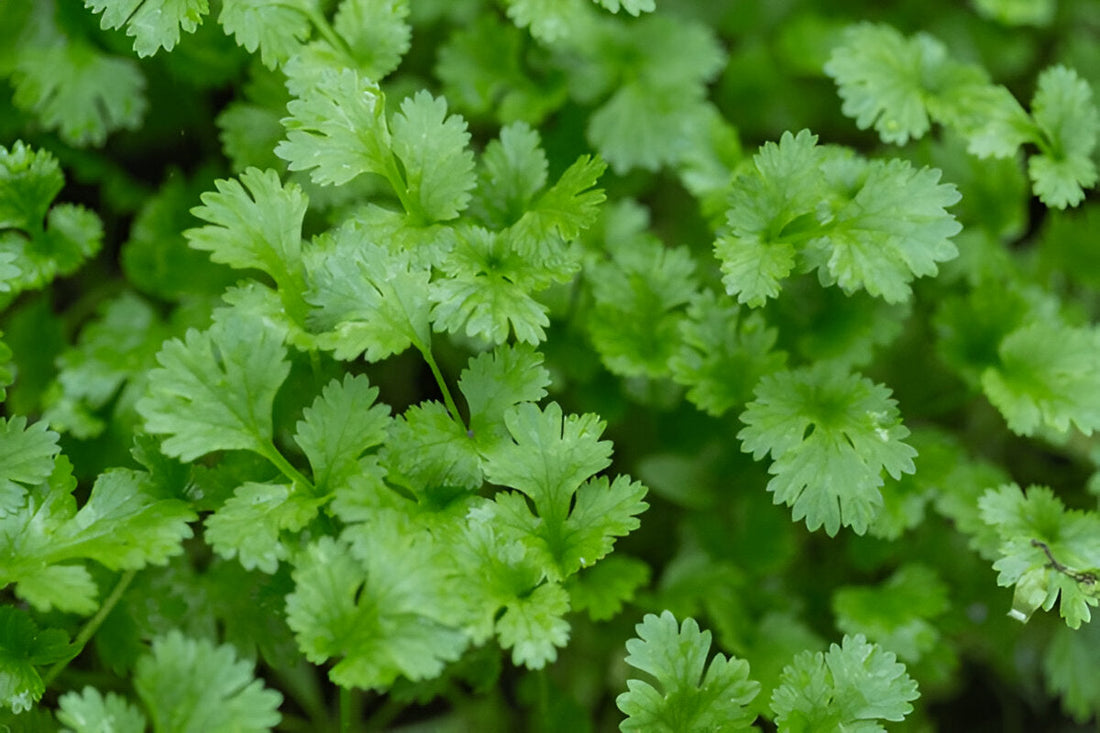
Grow Coriander in Pakistan – Moji Mall Guide
Share
Growing coriander (دھنیا) at home is one of the easiest ways to always have fresh, fragrant herbs for your kitchen. Whether sprinkled on curries or used in chutneys, fresh dhaniya straight from your garden brings unmatched flavor. Here’s a simple guide to growing coriander successfully in Pakistan’s climate.
| Aspect | Details |
|---|---|
| Best Sowing Time | October to February |
| Ideal Temperature | 15°C to 25°C |
| Germination Time | 7–14 days |
| Transplant Time | Direct sowing (no transplanting needed) |
| Spacing | 2–3 inches between plants |
| Harvest Time | 40–50 days after sowing |
Step 1: Sow Seeds 🌱
When to Sow:
- Sow seeds from October to February, during cooler months when temperatures stay mild.
- The ideal soil temperature for sowing is 15°C to 25°C.
- Avoid sowing during hot months, as coriander tends to bolt quickly in heat.
How to Sow: Lightly crush the coriander seeds to split them in half before sowing. Direct sow seeds 0.25 inch deep in moist, fertile soil.
Germination Tips: Seeds germinate in 7–14 days. Keep soil moist but not soggy during germination. Sow a fresh batch every 2–3 weeks for a continuous supply.
Step 2: Thin Seedlings 🌿
When to Thin: Once seedlings are about 2–3 inches tall, thin them gently to leave 2–3 inches between each plant.
Why Thin: Proper spacing allows better airflow and gives each plant enough room to develop lush foliage.
Aftercare: Water lightly after thinning and mulch lightly to retain soil moisture.
Step 3: Care for Plants 🌞💧
Sunlight Needs: Coriander grows best in full sun to partial shade, especially in mild winter sun.
Watering: Water 2–3 times a week to keep the soil consistently moist. Avoid overwatering to prevent root rot.
Feeding Schedule: Coriander usually does well in compost-rich soil. If needed, give a light feed with organic fertilizer once after plants are 3–4 inches tall.
Step 4: Protect Plants 🐛
Common Pests: Watch for aphids and leaf miners.
Natural Protection: Spray neem oil every 10–12 days (1 tablespoon neem oil + 1 liter water + few drops soap), especially under leaves.
Common Problems:
- Early Flowering (Bolting): Caused by heat or stress — sow in cooler months for lush leaves.
- Yellowing Leaves: Often from water stress — adjust watering and use mulch to keep moisture steady.
- Weak Growth: Can happen in very poor soil — enrich with compost before sowing.
Step 5: Harvest Leaves 🌿
When to Harvest: You can start harvesting leaves 40–50 days after sowing, once plants are 5–6 inches tall.
How to Harvest: Cut the outer leaves first with scissors, allowing the center to keep growing for a continuous supply.
Bonus Tip: Regular cutting encourages the plant to produce more leaves before it bolts to flower.
FAQs
Can I grow coriander in pots?
Yes, coriander grows very well in 8–10 inch deep pots filled with fertile, loose soil.
Why is my coriander flowering too early?
Early flowering happens due to heat or dry stress. Sow during cooler months and water steadily.
How often can I harvest coriander leaves?
You can harvest every 7–10 days once plants are mature enough, depending on how fast they regrow.
Can coriander grow indoors?
Yes, place pots near a bright window where they can get at least 4–6 hours of sunlight.
How long does a coriander plant live?
Coriander is a fast-growing herb that completes its life cycle in about 3–4 months, but regular harvesting prolongs leaf production.
Growing coriander at home is simple if you start in cool weather and keep the soil moist. With just a little care, you’ll always have fresh dhaniya ready to lift the flavor of any dish.

